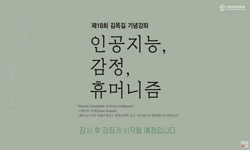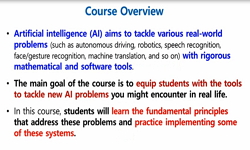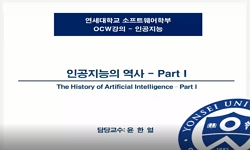이 글은 예상하기 어려울 정도로 빠르게 발전하는 과학기술로부터 비롯된 이른바 트랜스휴머니즘 시대에 접어들게 되면서, 이를 실현할 수단인 이식형 의료기기가 내포하고 있는 개인정보 ...
http://chineseinput.net/에서 pinyin(병음)방식으로 중국어를 변환할 수 있습니다.
변환된 중국어를 복사하여 사용하시면 됩니다.
- 中文 을 입력하시려면 zhongwen을 입력하시고 space를누르시면됩니다.
- 北京 을 입력하시려면 beijing을 입력하시고 space를 누르시면 됩니다.

트랜스휴머니즘 시대 이식형 의료기기의법적 위험에 대한 연구 - 개인정보보호와 사이버정보보안을 중심으로 - = A Study on the Legal Risks of Implantable Medical Devices in the age of Transhumanism - Focusing on personal data protection and cyber data security -
한글로보기https://www.riss.kr/link?id=A108183982
- 저자
- 발행기관
- 학술지명
- 권호사항
-
발행연도
2022
-
작성언어
Korean
- 주제어
-
등재정보
KCI등재
-
자료형태
학술저널
-
수록면
161-217(57쪽)
-
KCI 피인용횟수
0
- DOI식별코드
- 제공처
- 소장기관
-
0
상세조회 -
0
다운로드
부가정보
국문 초록 (Abstract)
이 글은 예상하기 어려울 정도로 빠르게 발전하는 과학기술로부터 비롯된 이른바 트랜스휴머니즘 시대에 접어들게 되면서, 이를 실현할 수단인 이식형 의료기기가 내포하고 있는 개인정보 및 정보보안의 법적 위험에 초점을 맞추었다. 따라서 아직은 현실에서 일어나지 않았거나, 어쩌면 일어날 것 같지 않아서 다소 생소한 느낌이 드는 글로 비춰 질 수 있다.
그럼에도 불구하고 이런 생소한 느낌은 점차 현실화 되어 가고 있다. 다름 아닌 공상과학 영화에서 인간의 신체는 현실과 상상의 경계에서 다양한 가능성으로 비춰지고 있듯, 이제는 현실에서도 실현불가능하게 보였던 일들을 보고, 느끼고 경험하는 시대가 펼쳐지고 있다. 아직은 희박한 가능성이라고 하지만 첨단과학기술은 인간의 유한한 생물학적 조건을 기계와의 흡수․통합으로 탈신체화를 추구하고자 하는 트랜스휴머니즘 사고(思考)에 기여하였다. 그리고 이러한 트랜스휴머니즘적 사고가 현실화될 수 있도록 기여한 이식형 심장 제세동기(implantable cardioverter defibrillators ; ICDs), (체내)이식형 달팽이관(Cochlear Implants), 컴퓨터 의족(의수)(Foot Drop Implants)과 같은 인체 이식형 의료기기는 이상적인 트랜스휴머니즘의 중심에 서게 됐다. 결과적으로 이식형 의료기기는 신체장애로 고통 받는 이들에게 한줄기 희망을 선사하며 인간친화적인 트랜스휴머니즘이 의미하는 것이 무엇인지에 대한 방향을 제시해 주었다. 그렇다면 인간과 기계와의 흡수․통합으로 이상적인 트랜스휴머니즘의 실현 수단으로써 중요한 위치에 있는 이식형 의료기기 수혜자, 즉 이를 이식받은 인간을 어떻게 정의해야 할까? 트랜스휴먼은 자연적·생물학적 존재인 인간과 포스트휴먼으로 알려진 인공지능 사이의 경계쯤으로 정의되고 있는바, 이식형 의료기기를 삽입한 인간이 인간에 가까운 트랜스휴먼인 것인지 아니면 트랜스휴먼에 가까운 인간인 것인지 궁금하다. 아울러 이런 의문으로부터 이식형 의료기기를 이식받은 자는 개인정보보호법상 정보주체로서 보호받을 수 있는 것인지 역시 궁금하다. 앞으로 이식형 의료기기를 이식받게 되는 경우가 점차 증가할 것으로 예상되는 가운데, 지금처럼 한 두 개의 기기를 이식한 경우 외에도, 신체의 1/3, 1/2 또는 신체 대부분을 이식형 의료기기를 내재하고 있는 경우에는 자연적·생물학적 존재가 아닌 새로운 인간 존재로 바라보게 될 가능성은 없는 것인지 의문이다. 바로 모두가 당연하게 생각하는 인간의 개념과 다가올 미래사회의 전혀 새로운 인간의 개념을 논하는 것은 이상적인 트랜스휴머니즘 실현의 수단인 이식형 의료기기가 내포하고 있는 법적 위험을 해결하기 위한 출발점이라고 할 것이다.
현행 개인정보보호법 제2조 제3호에서 밝히고 있는 ‘사람(인간)’에 대한 개념이 정립되지 않는다면 현행법만으로는 이식형 의료기기를 이식받은 자에 대한 정보주체의 법적 권리를 보장할 수 없게 되어 이들의 법적 불안은 계속될 수밖에 없다. 이식형 의료기기는 유무선통신기능이 가능한 디지털 전자기기로 데이터를 생성하고 외부와 송수신이 가능하다. 따라서 환자의 치료 설정 등 많은 개인정보를 포함하고 있는 이식형 의료기기는 데이터의 무결성에 대한 악의적인 변경이 일어날 수 있고, 데이터 기록 및 전송과정에서 환자 정보와 프라이버시를 침해하는 악의적인 공격에 취약하다는 문제를 갖고 있다. 인...
다국어 초록 (Multilingual Abstract)
As we enter the so-called transhumanism era which stems from unpredictably fast-developing science and technology, this article focuses on the legal risks of personal data and data security of implantable medical devices by means of realizing it. The...
As we enter the so-called transhumanism era which stems from unpredictably fast-developing science and technology, this article focuses on the legal risks of personal data and data security of implantable medical devices by means of realizing it. Therefore, it may be seen unrealistic or felt somewhat unfamiliar.
As we have seen in science fiction movies, the human body is seen as various possibilities in the boundary between reality and imagination. Although it is still a rare possibility, high-tech technology has contributed to the transhumanistic thinking of pursuing de-bodyization by absorbing and integrating human finite biological conditions with machines. And implantable medical devices such as implantable cardioverter defibrillators(ICDs), cochlear implants and computer prosthetics that helped make this transhuman thinking a reality have become at the center of ideal transhumanism. As a result, the implantable device gave a ray of hope to those suffering from physical disabilities and provided a direction for what ideal transhumanism is. If so, how we define the recipients of implantable medical devices who hold an important position as means of realizing transhumanism through absorption and integration of humans and machines? Transhuman is defined as the boundary between humans, which are natural and biological beings, and posthuman, known as artificial intelligence, so I wonder if the human who inserted the implantable medical device is a transhuman close to a human or a transhuman close to a transhuman. In addition, it is curious whether a person who has received a transplant type medical device can be protected as an data subject under the Personal Data Protection Act. With implantable medical devices expected to increase in the future, it is questionable whether those who 1/3 or 1/2 of the body, or most of the body consist of implantable medical devices will be viewed as a new human being rather than a natural or biological one. Discussing the human concept that everyone takes for granted and the completely new human concept in the future society is a starting point for solving the legal risks of implantable medical devices, which are an ideal means of realizing transhumanism.
If a new concept of humans is not established within the scope of interpretation of Article 2, No. 3 "People(Human being)" of the current Personal Data Protection Act, legal anxiety over beneficiaries embedded with implantable medical devices under the current law will continue. Implantable Medical Devices are digital electronic devices that can perform wired and wireless communication functions and can generate data and transmit and receive data from the outside. Thus, implantable medical devices, which contain a lot of personal data, such as setting up patient care, are vulnerable to malicious attacks that violate patient data and privacy during data recording and transmission. As transhumanism and implantable devices which are human aspirations cannot be separated, legal risks such as personal data protection and cyber data security are bound to coexist in the process of realizing ideal transhumanism. The scope of interpretation of Article 2 No. 3 "People(Human being)" of the personal data protection and the security risk under Article 28-2 of the same Act can be said to be the legal risk of implantable medical devices in the process of realizing transhumanism.
참고문헌 (Reference)
1 송승현, "트랜스휴먼 및 포스트휴먼그리고 안드로이드(로봇)에 대한 형법상 범죄주체의 인정여부" 법학연구소 17 (17): 475-527, 2016
2 김성용 ; 정관영, "인공지능의 개인정보 자동화 처리가 야기하는 차별 문제에 관한 연구" 법학연구소 60 (60): 311-362, 2019
3 박소영, "인공지능 시대 인간의 신체와 문학적 형상화- 사이보그, 트랜스휴먼, 포스트휴먼 그리고 『뉴로맨서』" 한국문화융합학회 41 (41): 1157-1190, 2019
4 심지원, "의족을 훔치는 행위는 상해죄인가 절도죄인가: 보형물을 신체의 일부로 규정할 수 있는 기준" 한국과학철학회 18 (18): 177-195, 2015
5 식품의약품안전처, "의료기기의 사이버보안 허가심사 가이드라인" 2022
6 "식약처, 의료기기 사이버보안 강화 - ‘의료기기 사이버보안 허가․심사 기준’ 개정••• 국제조화된 기준 적용 -"
7 김성용 ; 정관영, "성적자기결정권의 보완 수단으로서 인공지능에 대한 소고 - 성매매알선 등 행위의 처벌에 관한 법률 제21조 제1항에 대한 비판적 검토를 중심으로 -" 법학연구소 47 : 589-639, 2020
8 "새로운 형태의 의료기기 개발 전망 분석 제시"
9 김성용, "사이버 공간에서 디지털 자구행위 (Digital self-help) 법제도화를 위한 해킹백(Hacking Back)에 관한 소고" 법학연구소 34 (34): 261-315, 2021
10 손승우 ; 박장혁 ; 문수미, "사물인터넷 사업자를 위한 정보보안 법률의 개선 방안 연구" 법학연구소 57 (57): 181-215, 2016
1 송승현, "트랜스휴먼 및 포스트휴먼그리고 안드로이드(로봇)에 대한 형법상 범죄주체의 인정여부" 법학연구소 17 (17): 475-527, 2016
2 김성용 ; 정관영, "인공지능의 개인정보 자동화 처리가 야기하는 차별 문제에 관한 연구" 법학연구소 60 (60): 311-362, 2019
3 박소영, "인공지능 시대 인간의 신체와 문학적 형상화- 사이보그, 트랜스휴먼, 포스트휴먼 그리고 『뉴로맨서』" 한국문화융합학회 41 (41): 1157-1190, 2019
4 심지원, "의족을 훔치는 행위는 상해죄인가 절도죄인가: 보형물을 신체의 일부로 규정할 수 있는 기준" 한국과학철학회 18 (18): 177-195, 2015
5 식품의약품안전처, "의료기기의 사이버보안 허가심사 가이드라인" 2022
6 "식약처, 의료기기 사이버보안 강화 - ‘의료기기 사이버보안 허가․심사 기준’ 개정••• 국제조화된 기준 적용 -"
7 김성용 ; 정관영, "성적자기결정권의 보완 수단으로서 인공지능에 대한 소고 - 성매매알선 등 행위의 처벌에 관한 법률 제21조 제1항에 대한 비판적 검토를 중심으로 -" 법학연구소 47 : 589-639, 2020
8 "새로운 형태의 의료기기 개발 전망 분석 제시"
9 김성용, "사이버 공간에서 디지털 자구행위 (Digital self-help) 법제도화를 위한 해킹백(Hacking Back)에 관한 소고" 법학연구소 34 (34): 261-315, 2021
10 손승우 ; 박장혁 ; 문수미, "사물인터넷 사업자를 위한 정보보안 법률의 개선 방안 연구" 법학연구소 57 (57): 181-215, 2016
11 김성용, "법조(法曹)영역으로의 인공지능 도입에 대한 제언: 영업비밀 침해사건을 중심으로" 서울대학교 기술과법센터 15 (15): 2019
12 김훈기, "바이오해커가 온다" (주)글항아리 2015
13 "과기정통부, 신규 사물인터넷(IoT) 주파수 수요조사 실시"
14 최봉문, "고령자를 위한 헬스케어를 지원하는 법제도의 국내외 실태분석 및 시사점" 2012
15 이상윤, "개인정보보호법 개정과 건강정보 특별법 제정의 필요성" (10) : 2020
16 이창범, "개인정보보호법" 법문사 2012
17 몽테스큐, "法의 精神" 乙酉文化社 1964
18 Richard Yonck, "he next generation of hackers may target your medical implants"
19 Haley Weiss, "Why You’re Probably Getting a Microchip Implant Someday"
20 Daniel Halperin, "University of Massachusetts Amherst ScholarWorks@UMass Amherst" University of Massachusetts Amherst ScholarWorks@UMass Amherst, Computer Science Department Faculty Publication Series 68-, 2008
21 Reuters, "Ukrainian nurse who lost both legs dances with new husband, vows to keep living"
22 Margaryta Chornokondratenko, "Ukrainian nurse who lost both legs dances with new husband, vows to keep living"
23 Mark O'Connell, "To Be a Machine: Adventures Among Cyborgs, Utopians, Hacker, and the Futurists Solving the Modest Problem of Death Granta Publications" 2017
24 Betsy Atkins, "The hack back bill legitimizes a messy game of revenge for businesses"
25 Steve Morgan, "The World Will Store 200 Zettabytes Of Data By 2025"
26 M. Mitchell Waldrop, "The Dream Machine, J.C.R. Licklider and the Revolution that Made Computing Personal" 2001
27 Jena McGregor, "Some Swedish workers are getting microchips implanted in their hands"
28 chary Paul Birnbaum, "Regulating the Cyberpunk Reality: Private Body Modification and the Dangers of ‘Body Hacking" 119-, 2021
29 Mary Beth Nierengarten, "Protecting Medical Devices against Cyberthreats"
30 Robert van den Hoven Genderen, "Privacy and Data Protection in the Age of Pervasive Technologies in AI and Robotics" 3 : 2017
31 International Medical Device Regulator Forum, "Principle and Practices for Medical Device Cybersecurity" -International Medical Device Regulator Forum, “Principle and Practices for Medical Device Cybersecurity”(2020), 2020
32 Ian Sample, "Paralysed man walks again thanks to electrodes in his spine"
33 Halperin, D, "Pacemakers and implantable cardiac defibrillators: Software radio attacks and zero-power defenses" 008
34 National Heart, Lung, and Blood Institute(NIH), "Pacemakers What Are Pacemakers?"
35 W. H. Maisel, "Pacemaker and ICD generator malfunctions: Analysis of Food and Drug Administration annual reports" 295 (295): 2006
36 Benjamin Wittes, "Our Cyborg Future: Law and Policy Implications" Brookings 2014
37 Sieg Lindstrom, "Oscar Pistorius South African athlete"
38 Denning, T, "Neurosecurity: Security and privacy for neural devices" 27 (27): E7-, 2009
39 T. Denning, "Neurosecurity and privacy for neural devices" 27 (27): E7-, 2009
40 Nickolaus Hines, "Neural Implants Could Let Hackers Hijack Your Brain"
41 Cochlear Implants, "National Institute on Deafness and Other Communication Disorders(NIDCD)"
42 Lily Hay Newman, "Medical Devices Are the Next Security Nightmare"
43 H. Savci, "MICS transceivers: regulatory standards and applications" 2005
44 Bostrom, Nick, "Letter from Utopia" 2 (2): 2008
45 Sigal Samuel, "How biohackers are trying to upgrade their brains, their bodies and human nature"
46 Alex Hern, "Hacking risk leads to recall of 500,000 pacemakers due to patient death fears"
47 Bob Curley, "Hackers Can Access Pacemakers, but Don’t Panic Just Yet"
48 Henry Kenyon, "Hacker target medical equipment in health care industry"
49 박노형, "EU 개인정보보호법 –GDPR을 중심으로-" 박영사 2017
50 Chris Hables Gray, "Cyborgology: Constructing the Knowledge of Cybernetic Organisms" Routledge 1995
51 Linda MacDonald Glenn, "Case study: Ethical and Legal Issues in Human Machine Mergers(Or the Cyborgs Cometh)" 21 : 2012
52 "Active Implantable Medical Devices- Market Insights, Competitive Landscape and Market Forecast"
53 Lily Hay Newman, "A Zoom Flaw Gives Hackers Easy Access to Your Webcam"
54 Antigone Peyton, "A Litigators Guide to the Internet of Things" 22 : 3-, 2016
55 함민정, "20만명 의료정보 털린 대형병원···” 통지가 끝? “피해자들 분노"
56 식품의약품안전처, "2019년 신개발 의료기기 전망 분석 보고서" 2019
57 식품의약품안전처, "2018년 신개발 의료기기 전망 분석 보고서" 2018
동일학술지(권/호) 다른 논문
-
데이터 경제에 있어 계약관계의 규율: - ALI-ELI 데이터 경제 원칙상의 데이터 공급 계약과 데이터 마켓플레이스 계약을 중심으로 -
- 고려대학교 법학연구원
- 정신동
- 2022
- KCI등재
-
- 고려대학교 법학연구원
- 유양욱
- 2022
- KCI등재
-
- 고려대학교 법학연구원
- 김진아
- 2022
- KCI등재
-
법조 분야 인공지능 기술의 도입을 위한 고려 사항–상표 유사도 평가의 경우를 사례로
- 고려대학교 법학연구원
- 남구현
- 2022
- KCI등재
분석정보
인용정보 인용지수 설명보기
학술지 이력
| 연월일 | 이력구분 | 이력상세 | 등재구분 |
|---|---|---|---|
| 2026 | 평가예정 | 재인증평가 신청대상 (재인증) | |
| 2020-01-01 | 평가 | 등재학술지 유지 (재인증) |  |
| 2017-01-01 | 평가 | 등재학술지 유지 (계속평가) |  |
| 2013-01-01 | 평가 | 등재학술지 유지 (등재유지) |  |
| 2010-06-25 | 학술지명변경 | 외국어명 : 미등록 -> Korea Law Review |  |
| 2010-01-01 | 평가 | 등재학술지 선정 (등재후보2차) |  |
| 2009-01-01 | 평가 | 등재후보 1차 PASS (등재후보1차) |  |
| 2008-01-01 | 평가 | 등재후보 1차 FAIL (등재후보1차) |  |
| 2006-01-01 | 평가 | 등재후보학술지 선정 (신규평가) |  |
학술지 인용정보
| 기준연도 | WOS-KCI 통합IF(2년) | KCIF(2년) | KCIF(3년) |
|---|---|---|---|
| 2016 | 1.42 | 1.42 | 1.11 |
| KCIF(4년) | KCIF(5년) | 중심성지수(3년) | 즉시성지수 |
| 1.14 | 1.05 | 1.166 | 0.89 |





 KCI
KCI KISS
KISS







